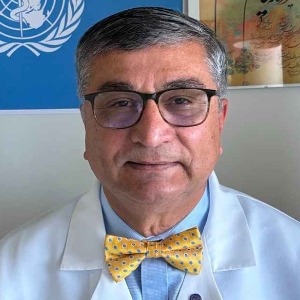10th Edition of
World Congress on Infectious Diseases & One Health
October 05-07, 2026 | Tokyo, Japan
African Sleeping Sickness, caused by the protozoan parasites Trypanosoma brucei gambiense and Trypanosoma brucei rhodesiense, represents a significant public health challenge in sub-Saharan Africa. Tsetse flies act as vectors, transmitting the parasites to humans during blood meals. The infection progresses through different stages, with the initial hemolymphatic stage characterized by non-specific symptoms such as fever and joint pain. As the disease advances, parasites invade the central nervous system, leading to neurological symptoms like sleep disturbances, confusion, and daytime somnolence. The manifestation of altered sleep patterns gives rise to the name "Sleeping Sickness." The two subspecies of the parasite contribute to distinct clinical forms, with T. b. gambiense causing a chronic form prevalent in West and Central Africa and T. b. rhodesiense causing an acute form in East Africa. Diagnostic challenges, limited access to healthcare, and the complexity of treatment contribute to the disease's impact. The drugs used for treatment, such as pentamidine, suramin, melarsoprol, and eflornithine, have varying efficacy and potential side effects. Efforts to control African Sleeping Sickness involve surveillance, vector control strategies, and public health campaigns to raise awareness and promote early diagnosis and treatment. International collaborations and research efforts aim to develop safer and more effective drugs, improve diagnostic tools, and implement sustainable control measures to reduce the burden of African Sleeping Sickness on affected communities.


By signing up, you agree to join our mailing list to receive information and updates.
Title : Molecular crosstalk between the host and pathogen in Streptococcus pyogenes virulence
Francis J Castellino, University of Notre Dame, United States
Title : The impact of expanded adolescent vaccination against Omicron waves depends on the epidemic status: A mathematical modelling study
Anna Fairweather, University of Oxford, United Kingdom
Title : Comprehensive HIV care through integrated STI and primary care services at the LGBTQ+ Center of Southern Nevada
Darya V Fridman, The Southern Nevada LGBTQ+ Center, United States
Title : Host brakes on viral inflammation
Saurabh Chattopadhyay, University of Kentucky College of Medicine, United States
Title : Meeting the needs of adults aged 50+ with HIV through the new opening of a primary care clinic at the LGBTQ Center of Southern Nevada
Darya V Fridman, The Southern Nevada LGBTQ+ Center, United States
Title : Common infections in cancer patients – narrative review and clinical pearls
Patricia Tai, University of Saskatchewan, Canada